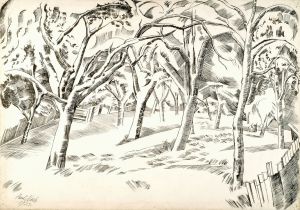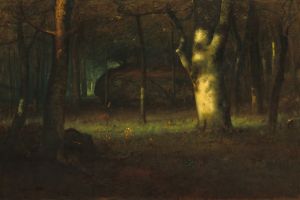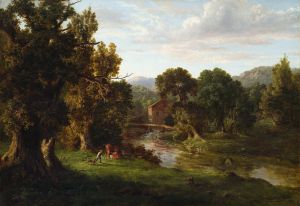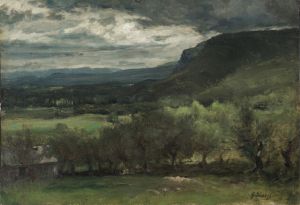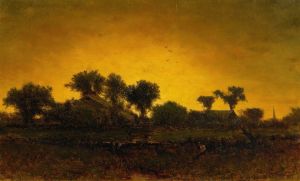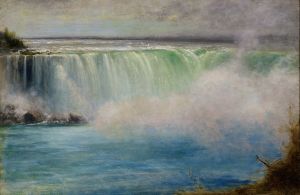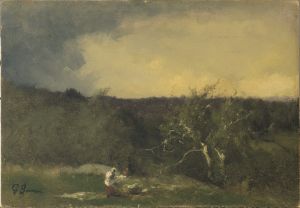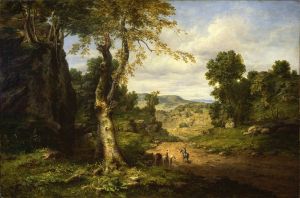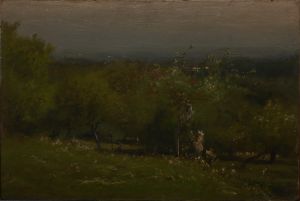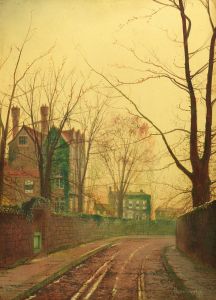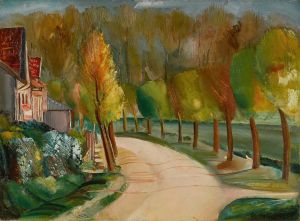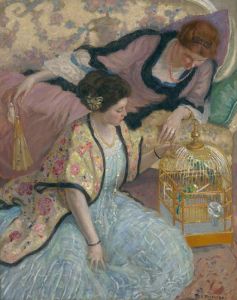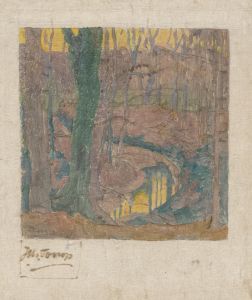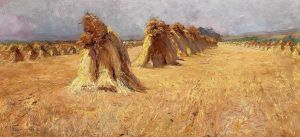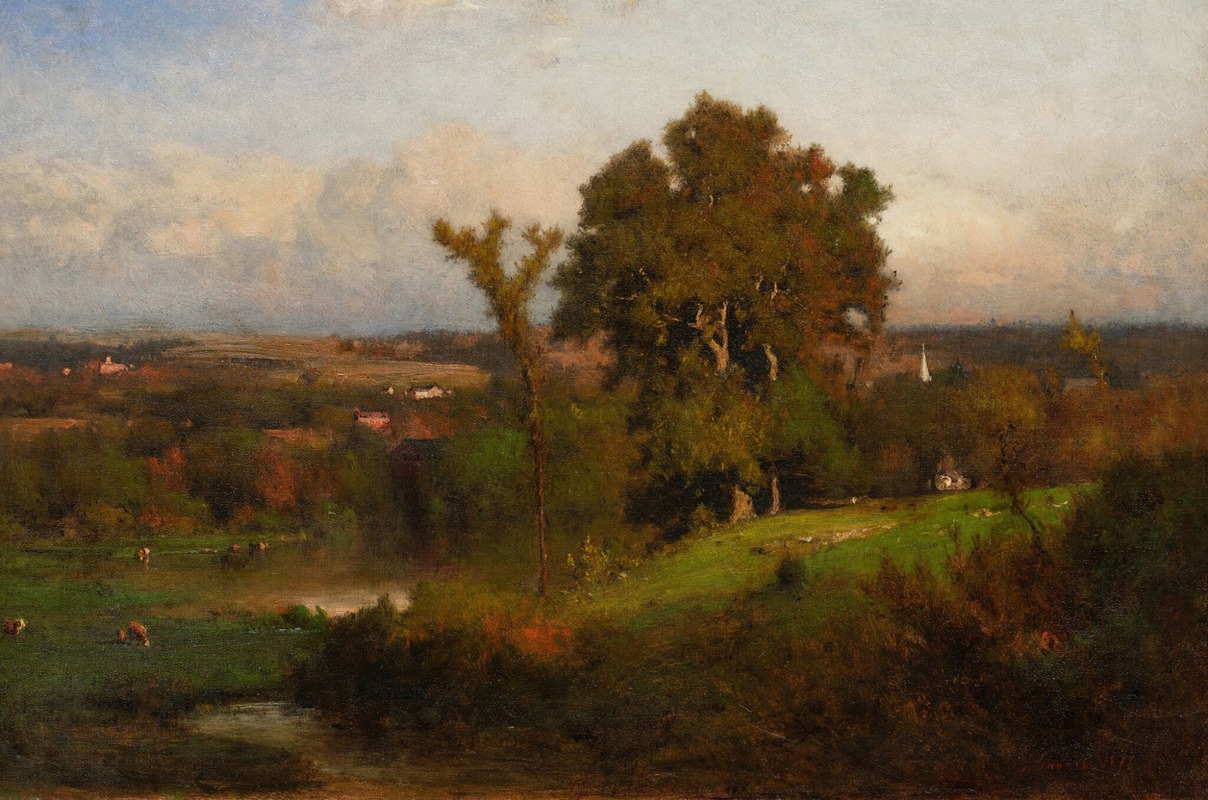
Autumn Near Marshfield
A hand-painted replica of George Inness’s masterpiece Autumn Near Marshfield, meticulously crafted by professional artists to capture the true essence of the original. Each piece is created with museum-quality canvas and rare mineral pigments, carefully painted by experienced artists with delicate brushstrokes and rich, layered colors to perfectly recreate the texture of the original artwork. Unlike machine-printed reproductions, this hand-painted version brings the painting to life, infused with the artist’s emotions and skill in every stroke. Whether for personal collection or home decoration, it instantly elevates the artistic atmosphere of any space.
"Autumn Near Marshfield" is a notable painting by the American landscape artist George Inness, created in 1865. Inness is recognized as one of the most influential American artists of the 19th century, often associated with the Hudson River School, although his style evolved significantly throughout his career. This particular painting exemplifies his transition towards a more personal and expressive style that would later align with the Tonalist movement.
The painting depicts a serene autumnal scene near Marshfield, Massachusetts. Inness was known for his ability to capture the atmospheric qualities of a landscape, and "Autumn Near Marshfield" is a testament to this skill. The work features a harmonious blend of warm autumn colors, with rich browns, deep reds, and golden yellows dominating the canvas. These colors are used to portray the changing foliage, a hallmark of the New England autumn, which Inness captures with both precision and emotion.
Inness's technique in this painting reflects his mature style, where he moved away from the detailed realism of his earlier works towards a more suggestive and evocative approach. He employed softer brushstrokes and a more subdued palette to create a sense of mood and atmosphere, rather than focusing solely on the topographical accuracy of the scene. This method allows viewers to experience the tranquility and introspective quality of the landscape, inviting them to reflect on the beauty and transience of nature.
The composition of "Autumn Near Marshfield" is carefully balanced, with a foreground that gently leads the eye into the middle ground and beyond. Inness often used this technique to create a sense of depth and to draw viewers into the scene. The painting's horizon is low, emphasizing the expansive sky, which is rendered in soft, muted tones that suggest the diffused light of an overcast autumn day. This treatment of light and atmosphere is a key feature of Inness's work, reflecting his interest in the spiritual and emotional resonance of the natural world.
George Inness was deeply influenced by the philosophical and spiritual ideas of the time, particularly those of Emanuel Swedenborg, a Swedish theologian whose writings emphasized the connection between the physical and spiritual realms. Inness sought to express these ideas through his art, using landscape as a metaphor for spiritual experience. "Autumn Near Marshfield" can be seen as an embodiment of this philosophy, where the natural scene serves as a conduit for deeper reflection and contemplation.
Throughout his career, Inness's work received critical acclaim, and he is now regarded as a pivotal figure in American art history. His influence extended beyond his lifetime, impacting subsequent generations of artists who sought to capture the emotive power of the landscape. "Autumn Near Marshfield" remains an important example of his innovative approach to landscape painting, illustrating his ability to blend natural observation with a profound sense of spirituality and emotion.





